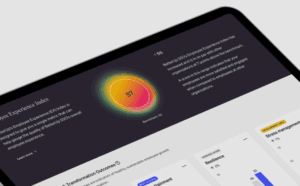
What Is Ecommerce SEO?
Ecommerce SEO is the practice of optimizing your online store to improve visibility in search engines like Google and drive high-intent traffic that converts. For ecommerce brands, SEO isn’t just about rankings—it’s about increasing metrics that matter, like average order value (AOV), conversion rate (CVR), and revenue per visitor.

Scalable Ecommerce SEO Solutions
Scalable Ecommerce SEO is essential for online retailers looking to grow traffic and revenue across thousands of product and category pages. Our ecommerce SEO solutions focus on optimizing PLPs (Product Listing Pages), PDPs (Product Detail Pages), and sitewide content to attract high-intent shoppers at every stage of the funnel.
We develop keyword-driven strategies that enhance visibility for both head terms and long-tail queries—ensuring your product and category pages are discoverable in organic search. From optimizing titles, meta descriptions, and schema markup to deploying scalable internal linking structures and AI-assisted content generation, we help ecommerce brands drive consistent, qualified traffic at scale.
Our approach is designed to grow with your catalog. Whether you have 100 SKUs or 100,000, we create repeatable SEO systems that boost performance across your site. The result? Improved rankings, higher conversion rates, stronger AOV, and increased revenue from organic search.

Ecommerce SEO Content Writing
High-impact content creation is essential for ecommerce sites looking to improve visibility, drive qualified traffic, and support conversions at scale. At Go Fish Digital, we develop content strategies designed to enhance your product and category pages with semantically relevant, entity-aligned assets that match how users search—and how search engines understand your catalog.
We focus on scalable content formats that support both SEO and user experience, including:
-
Bottom-of-product-page content: Often underutilized, this section is a valuable opportunity to add keyword-rich, informative content beneath the fold without disrupting the shopper experience. We craft this content to reinforce product relevance, highlight use cases, address FAQs, and capture long-tail queries—boosting indexability and rankings.
-
Product roundups and comparisons: These formats target high-intent users earlier in the funnel, answering queries like “Best running shoes under $100” or “Top kitchen blenders for smoothies,” while linking strategically to your PDPs.
-
In-depth product reviews and guides: These build trust and semantic relevance around key product lines, helping to rank for non-branded, informational searches that drive traffic and assist conversions.
-
Supporting informational content: We create topic clusters that align with your product categories and attributes—reinforcing your authority on specific SKUs, product types, and use cases while increasing overall topical depth.
Every piece of content is mapped to your product taxonomy and optimized for both semantic signals and search performance—ensuring your ecommerce site earns visibility where it matters most.

Technical SEO Improvements For Ecommerce Stores
Just as a finely tuned engine is essential for peak vehicle performance, a well-optimized technical foundation is critical for ecommerce sites looking to scale. At Go Fish Digital, our team specializes in uncovering and resolving the “under-the-hood” issues that can limit organic visibility and traffic.
We conduct in-depth technical SEO audits to identify and resolve issues impacting indexability, JavaScript rendering, and crawl budget efficiency. Whether you’re running a parts catalog with complex faceted navigation, or managing thousands of PDPs, we ensure search engines can efficiently crawl and understand your site.
Our technical SEO analysis includes:
-
Crawl depth and site architecture optimization
-
Identification of JavaScript-blocked content and rendering issues
-
Faceted navigation handling to prevent duplicate content and index bloat
-
Review and cleanup of indexation and canonical signals
-
Core Web Vitals and page speed enhancements
-
Search Console diagnostics to address errors, warnings, and indexation gaps
-
Strategic crawl budget management to prioritize your highest-value pages
With the right infrastructure in place, your automotive ecommerce platform can drive more visibility, increase conversions, and scale organically with confidence.

Mobile Technical SEO
In the automotive industry, where the journey towards purchasing a vehicle is often marked by detailed research and careful consideration, the user experience (UX) of your website can make all the difference. The Go Fish Digital team takes a holistic approach to optimizing the user journey on your website, guiding your visitors smoothly from first session to the final conversion.
We look at more than isolated pages or individual elements; we consider your website as an interconnected ecosystem. This involves assessing various touchpoints such as your homepage layouts, navigation menus, and inventory listing pages, among others. Our goal is to create a seamless UX and eliminate any roadblocks that might deter your customers. Through improvements towards overall UX, this can help improve both SEO and conversions from all digital channels.
Ecommerce SEO FAQs
What KPIs should ecommerce SEO focus on beyond traffic and visibility?
While clicks and rankings matter, the most impactful ecommerce SEO strategies prioritize business-driven KPIs such as:
-
Conversion rate (CVR)
-
Average order value (AOV)
-
Revenue per visitor
-
Organic-assisted conversions
-
Product discovery and SKU indexation
These metrics help align SEO performance with bottom-line results and ensure strategies are tied directly to ecommerce growth.
How does content writing at scale support Ecommerce SEO?
Scalable content creation powers long-tail visibility and drives users beyond the homepage. High-impact content types include:
-
Bottom-of-page content on product detail pages (PDPs) to capture informational queries and improve semantic depth
-
Category-level content for entity alignment and internal linking context
-
Product guides, comparisons, and FAQ hubs that support decision-making and drive internal traffic to PDPs
This approach builds sitewide relevance and supports discoverability across the entire buying journey.
Why is entity optimization and internal linking important for Ecommerce SEO?
Search engines now evaluate semantic relationships and topical depth, not just keywords. Including relevant entities—such as brands, features, product types, and use cases—strengthens your alignment with how products are understood algorithmically.
At the same time, internal linking at scale ensures category pages, PDPs, and supporting content reinforce each other, improving crawlability, indexation, and authority flow throughout the site.
How does Ecommerce SEO need to evolve for AI Search and multi-touch experiences?
AI-driven search (like Google’s SGE, AI Mode, or ChatGPT-powered recommendations) is shifting from single-query to multi-touch discovery, meaning users engage across content types before converting.
To future-proof your ecommerce SEO, it’s essential to go beyond just optimizing PLPs and PDPs. You need:
-
Informational and comparison content to feed AI-generated answers
-
Rich entity relationships in your content for context matching
-
Diversified content types that align with pre-purchase and decision-making stages
This creates a broader SEO footprint, increasing the chances your content is surfaced in AI-driven shopping journeys.





